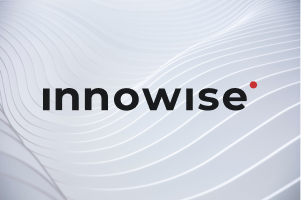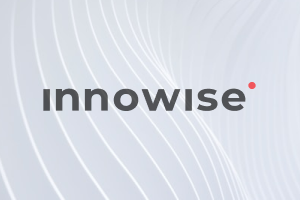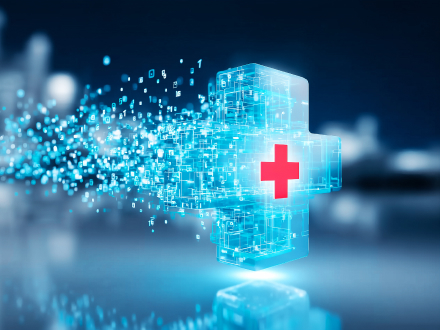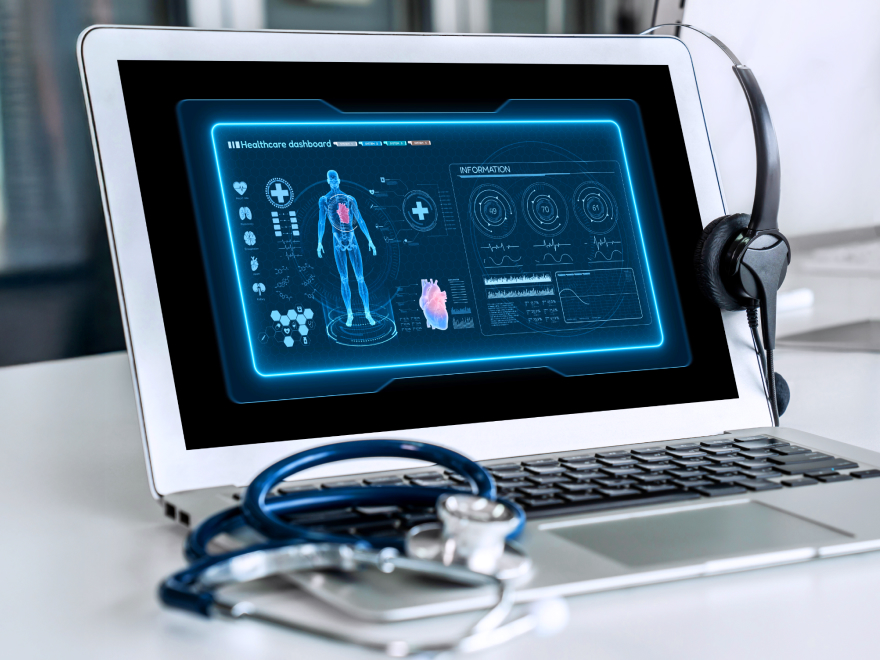Your message has been sent.
We’ll process your request and contact you back as soon as possible.
The form has been successfully submitted.
Please find further information in your mailbox.



Data mapping in healthcare is a process of matching fields between databases of different information systems. In other words, data mapping makes sense of each connection and creates a detailed blueprint for all healthcare data within an IT ecosystem.
Healthcare data comes from various sources, like EMRs or EHRs, medical CRMs, wearable devices, medical imaging systems, and billing systems. Each of these sources uses different data exchange and terminology standards, which can naturally complicate things. For example, a radiology system may use DICOM and EHR may use HL7, or different hospitals can code procedures using varying systems, like CPT and SNOMED CT. These variations make it difficult to integrate and interpret medical data.
By leveraging data mapping as a part of your healthcare software development process, providers can easily connect similar data and then transform it into a unified standard. As a result, healthcare businesses can overcome the fragmentation common to data systems in the industry and efficiently utilize data for patient care.
Data mapping is typically part of the data migration process within larger projects. In healthcare, it is applied in various areas, but there are some common scenarios.
Data migration refers to transferring data from one system to another, often when switching to a new system, upgrading an existing one, moving to the cloud, or undergoing digital transformation. During migration, data mapping establishes connections between data fields in different IT systems, enables error-free transfer, and helps maintain data consistency across solutions.

Data integration combines data from different sources into a single location, which is an absolute must-have for healthcare providers collecting operational and care-related data from various systems. Data mapping is a natural step during the integration since it bridges the systems that use the same data and guarantees its consistency and accuracy.

Healthcare providers often need to convert data from one format to another, either to integrate several systems or to make data easier to use and analyze. With healthcare data mapping, they can understand the connections between data in databases, regardless of the ways the information is stored, and then proceed with transformation into a unified format.

When implementing business intelligence in healthcare, going for data mapping helps ensure that data from multiple sources aligns properly for analytics. By linking different data sources, it streamlines data extraction, cleaning, and preparation. This way, BI tools access analysis-ready data and provide more accurate, actionable insights.

Many reporting solutions employ unique terminology and data structures, so medical businesses need to adjust their data to fit. Leveraging data mapping, healthcare providers synchronize their data with the reporting terminology and structure. It helps define what data is needed for specific reports and records and streamlines this process.

Electronic data interchange (EDI) automates document exchange between healthcare businesses — like hospitals and insurance companies — optimizing workflows and records management. In this case, data mapping specifies the data used in documents, where it’s located, and how it should be transformed to match the data structure required by the target software.

Data migration refers to transferring data from one system to another, often when switching to a new system, upgrading an existing one, moving to the cloud, or undergoing digital transformation. During migration, data mapping establishes connections between data fields in different IT systems, enables error-free transfer, and helps maintain data consistency across solutions.

Data integration combines data from different sources into a single location, which is an absolute must-have for healthcare providers collecting operational and care-related data from various systems. Data mapping is a natural step during the integration since it bridges the systems that use the same data and guarantees its consistency and accuracy.

Healthcare providers often need to convert data from one format to another, either to integrate several systems or to make data easier to use and analyze. With healthcare data mapping, they can understand the connections between data in databases, regardless of the ways the information is stored, and then proceed with transformation into a unified format.

When implementing business intelligence in healthcare, going for data mapping helps ensure that data from multiple sources aligns properly for analytics. By linking different data sources, it streamlines data extraction, cleaning, and preparation. This way, BI tools access analysis-ready data and provide more accurate, actionable insights.

Many reporting solutions employ unique terminology and data structures, so medical businesses need to adjust their data to fit. Leveraging data mapping, healthcare providers synchronize their data with the reporting terminology and structure. It helps define what data is needed for specific reports and records and streamlines this process.

Electronic data interchange (EDI) automates document exchange between healthcare businesses — like hospitals and insurance companies — optimizing workflows and records management. In this case, data mapping specifies the data used in documents, where it’s located, and how it should be transformed to match the data structure required by the target software.

Poor-quality data costs organizations an average of $12,9 million per year, according to Gartner. And the data issues pile up, leading to tangled data ecosystems and inaccuracies that influence decision-making. Data mapping can help tackle many of them and bring along the following benefits.
As data mapping is integral for interoperability, it helps healthcare professionals access the complete care information, even if it’s spread across different systems. It saves them time on data search, improves care coordination, and decreases administrative burdens.
By matching data from different sources, healthcare providers gain a better understanding of a patient’s health profile, including allergies, medications, and past treatments. This leads to faster referrals, minimized delays, and better patient outcomes.
Manual data entry is common in healthcare and often leads to errors, duplicates, or billing issues. Data mapping can aid in records transfer between different systems, alleviating the workload of medical staff. Studies show it works: 30% of providers say aggregated data platforms helped them save costs and manage their workforce better.
With proper data mapping, healthcare organizations can ensure that the records are consistently structured and managed in compliance with regulatory frameworks like HIPAA and GDPR. By organizing and consolidating data in one platform, organizations can ensure data accuracy and more easily maintain security requirements for protected health information.
By adopting data mapping, healthcare organizations can perform comprehensive data analysis and identify areas for resource optimization. These insights help allocate staff and equipment more efficiently, improve staff performance, and maximize the use of resources.
Researchers can use data mapping to create comprehensive datasets and conduct large-scale clinical trials and research studies. This allows them to identify trends in disease patterns, predict resource needs, and develop more effective healthcare strategies.
“In my experience, healthcare providers with complex data ecosystems absolutely need robust data mapping, especially when undergoing digital transformation. I’ve seen firsthand how essential it is to streamline data flow across various systems to ensure accuracy and consistency. My team and I have a deep understanding of healthcare processes and can help your business map the healthcare data, laying the groundwork for more complex and innovative IT projects.”

Aleh Yafimau
Delivery Manager
Epic’s EHR software is utilized by more than 305 million users worldwide. At the core of seamless data exchange lies data mapping. This technology enables healthcare providers to exchange information effortlessly and deliver enhanced, personalized care.
Merative, formerly known as IBM Watson Health, applies data mapping to integrate patient data across institutions for deeper research. It also ensures the accuracy and standardization of data for accurate AI analysis, leading to better healthcare decisions.
InterSystems’ HealthShare platform manages over 1 billion medical records worldwide and solves the issue of data silos in healthcare. By utilizing data mapping, HealthShare seamlessly integrates and aggregates patient information from various sources like electronic medical records and imaging systems.
Redox specializes in healthcare data integration, connecting organizations, applications, and data sources. They leverage data mapping to optimize data exchange and ensure secure patient data access and exchange. Also, Redox facilitates real-time, bidirectional data exchange across multiple environments and enables legacy data standards transformation.
Data mapping is crucial for managing the vast amount of healthcare data generated. With data mapping, healthcare providers can deliver more informed care, reduce errors and operational costs, and personalize treatment plans.
However, successful implementation requires careful planning and experience. Our team of experts can help you navigate the complexities of the process and ensure a seamless transition. If you’re interested in learning more about data mapping, its potential benefits for your business, and how we can help you leverage it for positive change, don’t hesitate to get in touch with us.
In short, data mapping in healthcare is about linking fields between systems’ databases. Mapping is an essential step of data migration and integration and is used to exchange information between two or more systems, like EMR, EHR, or patient apps. Further on, it enables dataset-based analytics, predictive analytics, medication testing, patient research, and more.
Data mapping streamlines information aggregation from multiple sources, facilitating care coordination between medical professionals and streamlining clinical decision-making. When there is no need for manual data entry into multiple systems, there are fewer risks of data loss, medical errors, missing and duplicated records, and security and compliance issues.
Healthcare data mapping, when done right, does not compromise security and regulatory compliance. This requires encrypting data using robust algorithms and storing it in a protected environment, with access restricted to authorized personnel only. To meet privacy regulations like HIPAA and GDPR, healthcare businesses that want to implement data mapping need additional protective measures, like regular audits and staff training on data safety best practices.














Your message has been sent.
We’ll process your request and contact you back as soon as possible.

By signing up you agree to our Privacy Policy, including the use of cookies and transfer of your personal information.